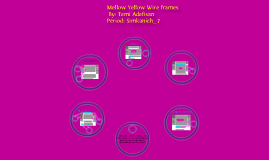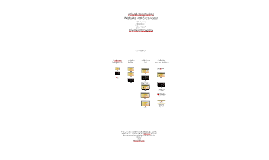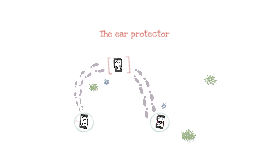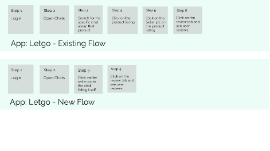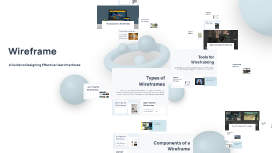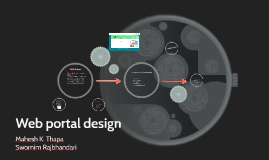Wireframe
Transcript: Definition of Wireframe A wireframe is a low-fidelity visual representation of a web page or application interface, illustrating structural elements and layout without detailed design features. It focuses on functionality and user interactions, providing a blueprint for development. Focus on Usability Usability is paramount in wireframing. Wireframes should prioritize user journeys, ensuring intuitive navigation and accessibility. Validating wireframes through user testing can provide valuable insights into potential usability issues early in the design process. Importance in UI Design Collaborate and Gather Feedback Introduction to Wireframes Wireframes are crucial for defining the layout and functionality of a user interface before the actual design process begins. They facilitate early discussions among stakeholders, aiding in identifying potential usability issues and aligning expectations. Wireframes serve as the backbone of user interface design, providing a visual representation of a web page's layout and functionality. Understanding wireframes is essential for creating cohesive and user-friendly digital experiences. Collaboration is key in the wireframing process. Engaging stakeholders and team members in critique sessions fosters a variety of perspectives, leading to a more refined design. Gathering feedback prompts improvements in the wireframe, enhancing its effectiveness. Common Misconceptions Simplify Designs Simplifying wireframe designs reduces cognitive load, allowing users to focus on the key functionalities. Eliminating unnecessary details helps in conveying the primary layout and structure more effectively, streamlining the design process. Many assume that wireframes are merely sketches or drafts, but they serve as essential tools for communication and validation during the design process. Wireframes should not be confused with prototypes, as they focus on layout rather than interactive elements. Best Practices in Wireframing Effective wireframing requires adherence to specific practices that enhance design clarity and user experience. Key strategies include simplifying designs, prioritizing usability, and fostering collaboration during the design process. Wireframe Tools for Wireframing Comparing Features A Guide to Designing Effective User Interfaces Wireframing tools are essential for visualizing user interface designs, allowing designers to create layout and flow without getting bogged down by visual details. The right tool enhances collaboration, speeds up the design process, and helps effectively communicate ideas. Key features to compare include user interface design capabilities, prototyping options, and integration with other design tools. Assess whether the software offers real-time collaboration, version control, and pre-built templates to save time. Popular Wireframing Software Tips for Choosing the Right Tool Types of Wireframes When selecting a wireframing tool, consider factors such as ease of use, scalability, and compatibility with existing design processes. Evaluate whether the tool supports collaboration and offers features like reusable components to enhance efficiency. Top wireframing software includes Balsamiq, Sketch, Figma, and Adobe XD. These tools offer various functionalities such as drag-and-drop interfaces, collaboration features, and integrations, enabling designers to streamline their workflow efficiently. Low-Fidelity Wireframes Wireframes are categorized into three main types: low-fidelity, mid-fidelity, and high-fidelity. Each type serves a unique purpose in the design process and helps communicate different levels of detail to stakeholders. Low-fidelity wireframes are basic sketches that focus on layout and structure rather than details. They allow designers to quickly conceptualize ideas and receive early feedback without getting bogged down in specifics. Mid-Fidelity Wireframes High-Fidelity Wireframes High-fidelity wireframes present a realistic depiction of the final product, incorporating colors and actual content. These wireframes are often used for user testing and provide a comprehensive view for stakeholders. Mid-fidelity wireframes introduce more detail, including basic graphics and more defined elements. These wireframes serve as a bridge between low-fidelity drafts and high-fidelity designs, making it easier to visualize functionality. Successful Wireframe Projects Content Placement Case Studies and Examples Companies like Uber and Airbnb utilized wireframing to enhance user journey mapping. By iterating on their wireframes, they achieved smoother interactions and improved overall design efficiency, resulting in higher user satisfaction. Content placement focuses on the strategic arrangement of text, images, and interactive elements within a wireframe. It should prioritize important information and create a visually balanced design that captures user attention. Analyzing real-world wireframe projects provides invaluable insights into






